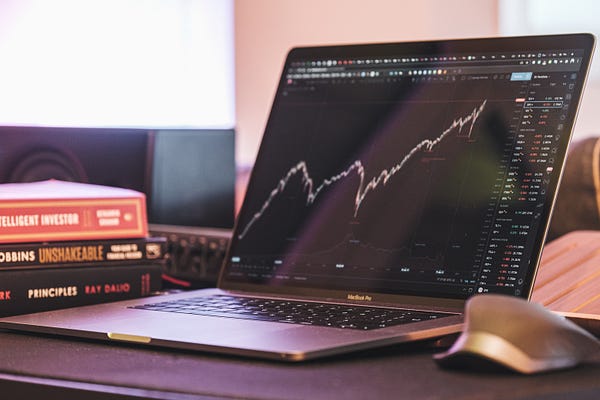How to Retire Using Only DeFi with Passive Income
Lean FIRE, Fat FIRE, Coast FIRE, Barista FIRE, and. . . De-FIRE?

It’s an exciting time for investors.
Still, it got me thinking — what will I do at the end of the oncoming bull run?
Will I be able to say when enough is enough? Will I do something sensible with the money?
That got me looking into my options. . .
In this article, we will breakdown all potential exit strategies as it pertains to F.I.R.E. and if the new De-FIRE movement is worth looking into.
What is FIRE?
I’ve gone into details of the movement here, so this should serve as a brief overview.
Financially Independent, Retire Early. Those are the fundamental goals of the financially frugal movement. It echoes messages of minimalism and freedom from the corporate world.
FIRE promises a better, more intentional life and is backed by math and history.
How to achieve FIRE?
There are three core staples of achieving FIRE and making it work:
- Save more than what financial advisors suggest.
- Invest in stability.
- Live frugally.
There are tips and tricks and other advice for succeeding on your FIRE journey, but that’s not the purpose of this article. Instead, I’d rather outline various FIRE strategies.
What types of FIRE are there?
We can break the movement into several different financial strategies based on your personal lifestyle requirements. Some of the traditional FIRE strategies for passive income include:
- Lean FIRE — for those who plan to tighten the belt in early retirement.
- Fat FIRE — for those who want luxury right out of the gate who might need to work longer.
- Coast FIRE — for those who have enough to fund current living expenses but elect to work part-time jobs that occupy their time or fuel their passions.
- Barista FIRE — for those who use part-time income to supplement their FIRE nest egg.
What is De-FIRE?
Remember back in 2017 when there were hundreds, if not thousands, of early influencers telling us how to retire on cryptocurrencies?
I wonder how many of them actually did. Lucky for them, if they cashed out in 2017, they probably ducked a huge tax bill. However, missed out on exponential growth in the meantime.
Plus, the crypto world is now backed by more stable platforms. Higher promises. And high guaranteed returns.
Yeah — you heard me. Guaranteed returns.
What does it mean?
First, you’d have to understand the basics of the FIRE movement. The belief that a 6–7% annual yield will be enough to cover the rise of inflation and a 4% nest egg withdrawal for 30 years or more.
Using this equation, one would only need to save 25x his/her annual expenses to achieve 100% passive income.
The only problem is if retiring on crypto, you better believe you’re in for a volatile ride. Crypto coins have been known to skyrocket and tank at a moment’s notice. And for reasons we can’t accurately predict yet — like the stock market but more extreme.
To this point, we haven’t formulated a way of earning consistent gains — such as the likes of index funds in the stock market.

But the problem with trusting investments of any kind is that nothing is guaranteed. Even an index fund can tank and leave you with a severely reduced nest egg.
I bet if we could stick our money in bonds that yield 4–5%, many of us would. That’s because it’s guaranteed money. However, bond returns are near an all-time low. At almost negligible rates.
The same goes for high-interest savings accounts. If we keep our money in those, it’s probable we’re losing money due to inflation.
Until now, there has been no reliable solution. Either you risk your nest egg on the market or you lose money to inflation. Many financial gurus say the perfect combination of each is the safest bet. A little money on the market, a little in bonds, and a little as cold hard cash. That’s been the best way to retire thus far.
Until, now, that is. . .
Introducing crypto staking and high returns on stable coins.
This is going to be a hard concept to understand and it deserves more independent study. We will only scratch the surface of what is being called the new high-interest savings accounts on crypto platforms all over the market.
Companies like BlockFI, Binance, and, most notably, Anchor, are offering returns on stable coins like we’ve never seen in the financial world.
Take, for instance, BlockFI’s guaranteed 8.6% annual yield on USDC (a coin that stays locked at the value of a United States Dollar). That means, as long as your money is staked in USDC on the platform, you will earn a hefty interest rate.
Basically, if you can trust the USD, you can trust USDC. They’re one and the same. Stable coins mirror real fiat currencies.
Liquidity
The best part is that you can get these returns from liquid investments. There is no lock on your capital as long as you choose a flexible staking option. Oftentimes, you have the option to lock your funds for a given period for a higher interest rate, but you don’t have to.
Even when you choose to lock your staking, the term period is generally not longer than a few months.
What does this mean for your F.I.R.E. journey?
It means our retirement strategies may finally have an avenue for peace of mind. That has long been missing in retirement planning equations.
Think about it. When normally you couldn’t predict whether or not your money could outlast your life due to the ever-changing stock market, with De-FIRE, you could theoretically predict your returns and cast your strategy on basic math.
If you’re earning, let’s say 10% from a high-interest staking investment (which isn’t outlandish), you could hedge 3% for inflation, live on 5%, and still draw in 2% for growth. It would be huge to be guaranteed a consistent return. It will change the FIRE game.
Is it safe to rely on crypto platforms?
Any investment, particularly online, is never 100% safe. Although online banking and investing are becoming continuously more secure, there will always be hackers. Many, if not a majority, of these crypto platforms are not insured.
That strikes panic in everyone.
Despite that, though, big-time investors are buying in at unprecedented rates. That’s because good crypto platforms keep a large majority of their capital in cold storage — a.k.a. offline. Where it can’t be hacked.
If you want to know whether or not a platform is reliable, you’ll have to do your own research to make the call. I suggest looking into where big-time investors are trusting their money. Also what percentage of the platform’s capital is in cold storage. Also, check out the security features. Then, you should be able to make an informed decision and not just go for the highest interest rate.
* Please note, I am not a financial professional. Please take all of my advice with a grain of salt. It’s likely you can learn just as much, if not way more than me, with just a little research. Do your due diligence before investing.
Join my FREE 5-Module Medium Crash Course for Early Success!
If you found this article engaging, hit the clapper button to help me out.
Connect with Me:
Work with Me // Newsletter // LinkedIn // Twitter // Facebook // Pinterest
** This article was originally published at www.adamcheshier.com **
Read More:
4 Ways to Grow Into a Real Traveler
The travel that you won’t find on an Instagram feed.